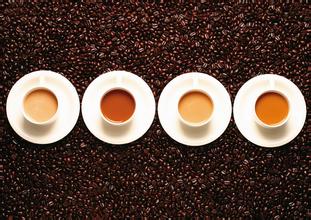Introduction to the varieties of grinding scale of Arabica Mantenin coffee bean flavor description treatment method
Introduction to the varieties of grinding scale of Arabica Mantenin coffee bean flavor description treatment method
Bourbon is almost all round beans, beans are a little smaller than tin card, ripening later, but the yield is 30% more than tin card. It is suitable for growing above 1200 meters above sea level, and its flavor is obviously more prominent than those below 1000 meters, but bourbon has a disadvantage that it will rest for a year as a result. Round bourbon is full of vitality, and its resistance to rust leaf disease is better than that of iron pickup, but its flavor is as good as it, or even better.
In 1810, some of the round beans in Bourbon Island mutated into pointed beans, which is known as the "pointed Bourbon". It is characterized by a caffeine content of only half, low yield, weak physique and extremely rare, just like a weak aristocratic teenager.
1, the market share is relatively large, there are many varieties of coffee, first of all, the two most common varieties are: Arabica and Robusta! The coffee beans on the market, unless there is coffee specially grown by Robusta, no matter what name you encounter, such as Yega Sheffield, Mantenin, Columbia, etc., all belong to the subline or native varieties under the Arabica variety.
2. Expensive Arabica is generally more expensive than other coffee beans
3. Under different planting conditions, it is best to plant in high altitude areas, with lower temperature and lower yield. It has a stronger taste, elegant mellow and acidity; about 1% caffeine (by weight) is expensive: other coffee beans are usually grown at lower elevations and higher temperatures, resulting in higher yields. Lighter taste, about 2% caffeine, lower price
Low yield Arabica coffee grows best, its flavor is much more refined than other coffee, and its caffeine content accounts for only 1% of the total weight of coffee.

Important Notice :
前街咖啡 FrontStreet Coffee has moved to new addredd:
FrontStreet Coffee Address: 315,Donghua East Road,GuangZhou
Tel:020 38364473
- Prev

An introduction to the extraction of three original species of hand-brewed coffee
Introduction to the three original species of hand-brewed coffee coffea robusta Linden was originally a mutant of the Congo (coffea canephora), but it is customary to compare the Robsta species with the Arabica species rather than the Congolese species. Robusta soybeans are relatively round and sour, but they have a unique bitter taste, and the flavor is similar to that of fried ones.
- Next

How does the thickness of coffee powder affect the taste-grinding thickness map
How does the thickness of coffee powder affect the taste? under normal circumstances, the thickness of coffee is inversely proportional to the extraction time and the extraction rate. It can be proved from hand brewing and espresso that the coarser the powder is, the smaller the extraction resistance is, the greater the flow rate is, the shorter the extraction time is, the lower the extraction rate is, and the lighter the taste is. On the contrary, the finer the powder is, the greater the extraction resistance is and the smaller the flow rate is.
Related
- Beginners will see the "Coffee pull flower" guide!
- What is the difference between ice blog purified milk and ordinary milk coffee?
- Why is the Philippines the largest producer of crops in Liberia?
- For coffee extraction, should the fine powder be retained?
- How does extracted espresso fill pressed powder? How much strength does it take to press the powder?
- How to make jasmine cold extract coffee? Is the jasmine + latte good?
- Will this little toy really make the coffee taste better? How does Lily Drip affect coffee extraction?
- Will the action of slapping the filter cup also affect coffee extraction?
- What's the difference between powder-to-water ratio and powder-to-liquid ratio?
- What is the Ethiopian local species? What does it have to do with Heirloom native species?

